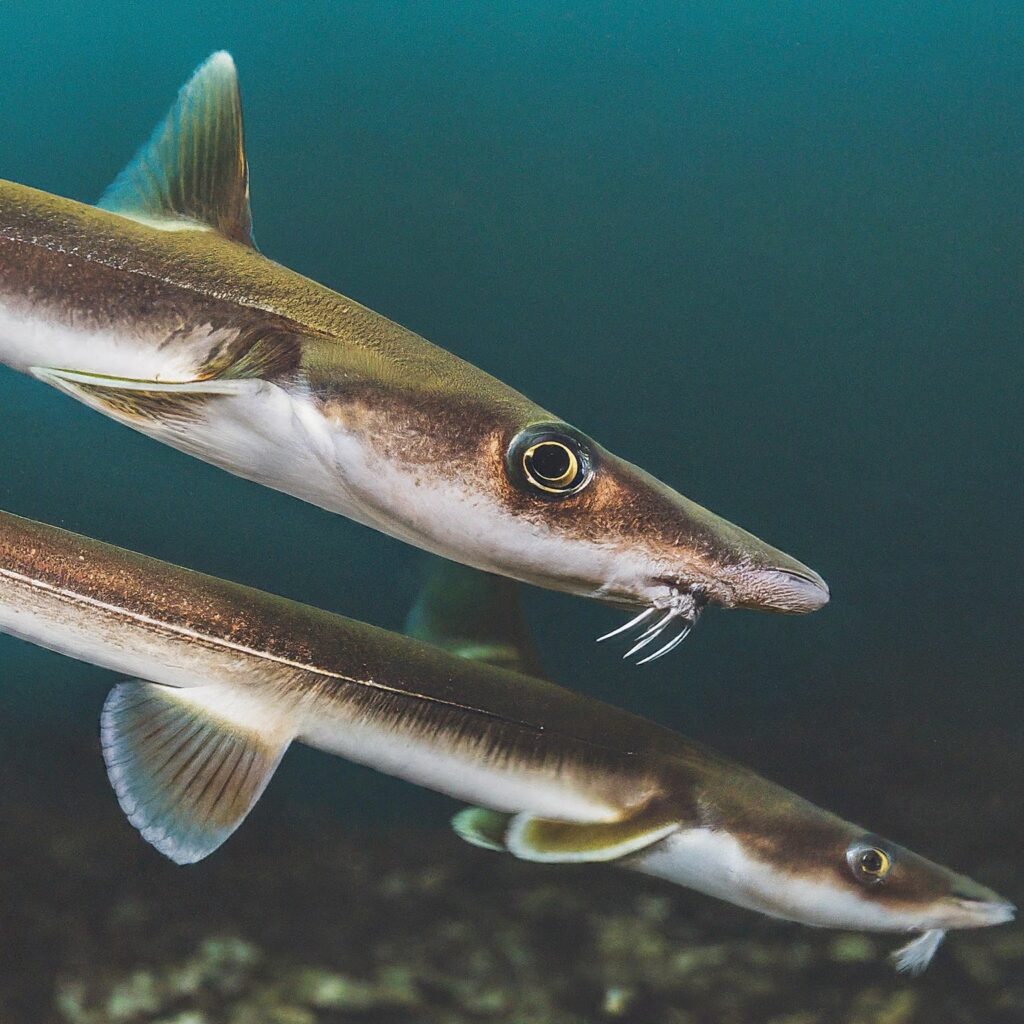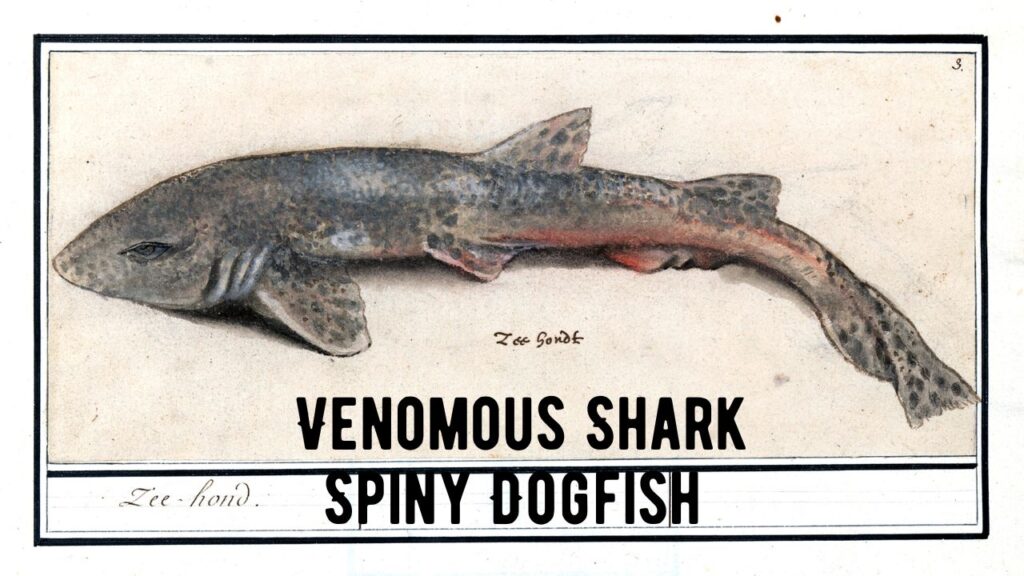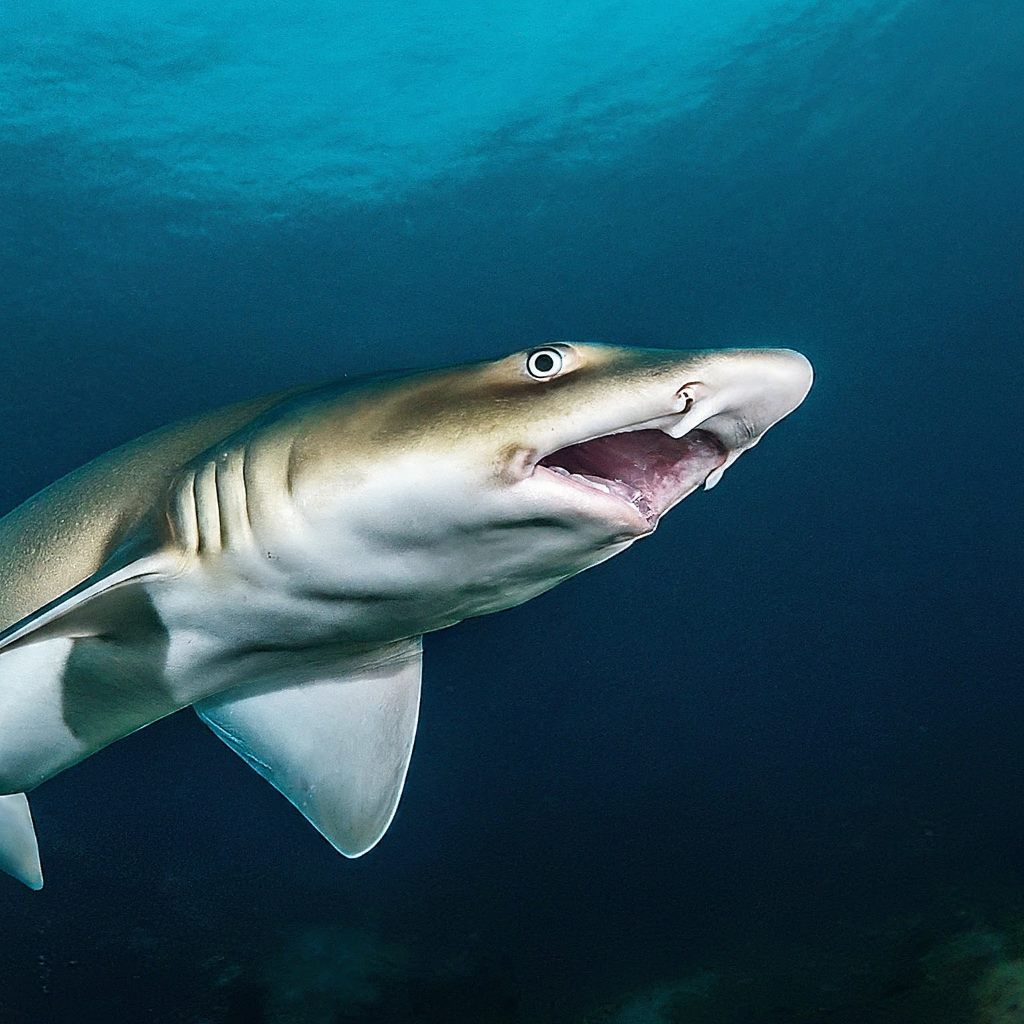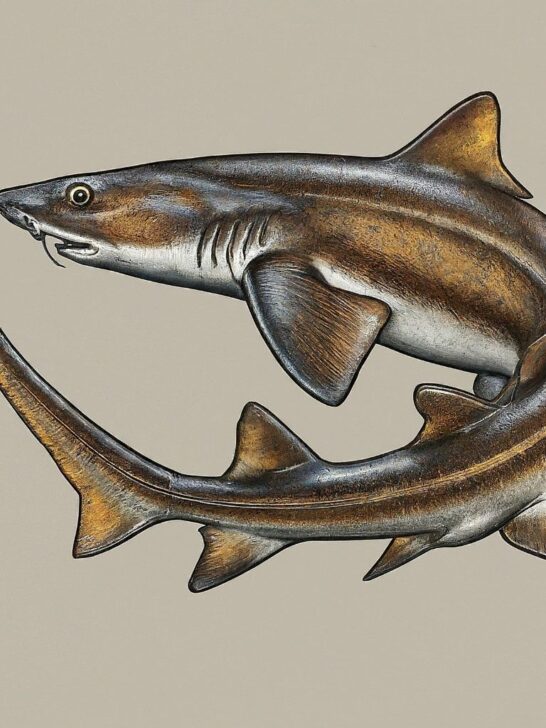Sharks, often regarded as the apex predators of the ocean, are subjects of fascination and awe. Among the myriad species, the Spiny Dogfish, also known as the Spurdog Shark (Squalus acanthias), stands out for its unique characteristics, including spines, venomous dorsal fins, and a reputation for being one of the ocean’s most intriguing creatures. In this article, we delve into the world of the Spiny Dogfish, exploring its biology, behavior, and the peculiarities that define its place in marine ecosystems.
The terms “Spiny Dogfish” and “Spurdog Shark” can be confusing, as they both refer to the same species: Squalus acanthias. It’s a small demersal shark found in temperate waters worldwide, known for its unique features and interesting behaviors.
Key characteristics of the Spiny Dogfish/Spurdog Shark:
- Slender body: The Spiny Dogfish has a slender, elongated body reaching up to 1.5 meters (5 feet) in length.
- Dorsal fin spines: Two dorsal fins are present, each with a sharp spine located in front of the fin. These spines are venomous and can deliver a painful sting.
- Grayish coloration: Their back and sides are grayish-brown, while the underside is white.
- Large dorsal fins: The two dorsal fins are relatively large and triangular in shape.
- Small teeth: The shark has small, sharp teeth in both its upper and lower jaws.
Habitat and behavior:
- Deep-sea dwellers: Spiny Dogfish primarily inhabit depths of 20 to 700 meters (65 to 2,300 feet) on continental shelves and slopes.
- Migratory: They exhibit migratory patterns, moving seasonally towards shallower waters in the summer and deeper waters in the winter.
- Schooling fish: These sharks often form large schools, sometimes numbering in the thousands.
- Opportunistic feeders: They feed on a variety of prey, including fish, squid, crustaceans, and even carrion.
Conservation status:
- Vulnerable: The Spiny Dogfish is classified as “Vulnerable” by the IUCN Red List due to overfishing and habitat loss. Its populations have declined significantly in many regions.

Taxonomy and Distribution
A. Taxonomic Classification
- Family Squalidae: The Spiny Dogfish belongs to the family Squalidae, which includes various dogfish sharks characterized by their spiny dorsal fins.
B. Global Distribution
- Cosmopolitan Distribution: Found in both temperate and subarctic waters, the Spiny Dogfish is a cosmopolitan species with a widespread presence in the Atlantic and Pacific Oceans.
Morphological Features
A. Spines and Dorsal Fins
- Prominent Spines: The Spiny Dogfish is named for the spines located in front of each dorsal fin, a distinctive feature setting it apart from many other shark species.
- Venomous Dorsal Fins: The spines are associated with venom glands, making the Spiny Dogfish one of the few venomous sharks.
B. Physical Characteristics
- Small Size: Typically growing to a length of 3.2 feet (1 meter), the Spiny Dogfish is relatively small compared to other shark species.
- Grayish-Brown Coloration: Its coloration ranges from gray to brown, providing effective camouflage in its oceanic habitats.

Venomous Adaptations
A. Venom Composition
- Squalamine: A unique compound found in the Spiny Dogfish’s venom, squalamine exhibits antimicrobial properties and plays a role in defense against potential threats.
B. Venom Delivery Mechanism
- Spines as Defensive Tools: The spines, when erect, act as formidable defensive tools. Contact with the spines can result in the injection of venom into potential predators or threats.
Ecological Role
A. Predator-Prey Dynamics
- Carnivorous Diet: The Spiny Dogfish primarily preys on small fish, squid, and crustaceans, contributing to the regulation of marine ecosystems.
B. Role in Food Chains
- Trophic Position: Positioned as a mesopredator, the Spiny Dogfish plays a crucial role in maintaining the balance of marine food webs.
Reproductive Behavior
A. Oviparous Reproduction
- Egg-Laying Habit: Like many other dogfish sharks, the Spiny Dogfish is oviparous, laying eggs in protective cases known as mermaid’s purses.
B. Slow Reproductive Rate
- Low Reproductive Output: The slow reproductive rate of the Spiny Dogfish contributes to vulnerability and underscores the importance of conservation efforts.
Human Interactions
A. Commercial Exploitation
- Historical Importance: The Spiny Dogfish has been historically significant in commercial fisheries, prized for its meat, liver oil, and fins.
- Challenges and Conservation: Overfishing and exploitation have led to population declines, prompting conservation measures to ensure the species’ survival.

Conservation Status and Efforts
A. Global Concerns
- IUCN Red List: The Spiny Dogfish is listed as vulnerable on the IUCN Red List, signaling global concerns about its population status.
B. Management Strategies
- Regulatory Measures: Fisheries management and regulatory measures aim to control fishing practices and mitigate the impact of overexploitation.
Conclusion
The Spiny Dogfish, with its venomous spines and distinct characteristics, embodies the marvels and complexities of the ocean’s biodiversity. From its evolutionary adaptations to its ecological significance, this small shark plays a crucial role in maintaining the health of marine ecosystems. As human activities continue to impact the ocean, understanding and conserving species like the Spiny Dogfish are paramount for the preservation of biodiversity and the delicate balance of the world’s oceans.
Frequently Asked Questions (FAQs)
Q1: Is the Spiny Dogfish shark dangerous to humans?
A1: While the Spiny Dogfish shark possesses venomous spines, it is not considered dangerous to humans. Its small size and preference for deep-sea habitats reduce the likelihood of encounters with humans.
Q2: What is the purpose of the venom in the Spiny Dogfish’s spines?
A2: The venom, primarily composed of a compound called squalamine, serves as a defense mechanism for the Spiny Dogfish. When threatened, the erect spines can inject venom into potential predators or threats.
Q3: How does the Spiny Dogfish contribute to marine ecosystems?
A3: The Spiny Dogfish plays a vital role in marine ecosystems as a mesopredator. By preying on small fish, squid, and crustaceans, it helps regulate the populations of its prey and maintains the balance of the food web.
Q4: Why is the Spiny Dogfish listed as vulnerable on the IUCN Red List?
A4: The Spiny Dogfish faces threats from overfishing and commercial exploitation, leading to population declines. Its slow reproductive rate and susceptibility to overexploitation contribute to its vulnerable status on the IUCN Red List.
Q5: What are the conservation measures in place for the Spiny Dogfish?
A5: Conservation efforts include fisheries management and regulatory measures to control fishing practices. These aim to mitigate the impact of overexploitation and ensure the sustainable conservation of the Spiny Dogfish.
Q6: Can the venom of the Spiny Dogfish cause harm to humans?
A6: While the venom of the Spiny Dogfish is not lethal to humans, it can cause discomfort, pain, and inflammation if the spines come into contact with the skin. However, incidents of human envenomation are rare.
Q7: Where can the Spiny Dogfish be commonly found?
A7: The Spiny Dogfish has a cosmopolitan distribution and can be found in both temperate and subarctic waters. It inhabits the Atlantic and Pacific Oceans, preferring deep-sea environments.
Q8: What is the reproductive strategy of the Spiny Dogfish?
A8: The Spiny Dogfish is oviparous, meaning it lays eggs. The female deposits egg cases, known as mermaid’s purses, in which the embryos develop until hatching.
Q9: Why is squalamine found in the venom of the Spiny Dogfish significant?
A9: Squalamine, found in the Spiny Dogfish’s venom, has antimicrobial properties. This compound is of interest in medical research for its potential applications in developing antibiotics and antiviral drugs.
Q10: How can humans contribute to the conservation of the Spiny Dogfish?
A10: Individuals can contribute to Spiny Dogfish conservation by supporting sustainable fisheries practices, advocating for responsible fishing regulations, and raising awareness about the importance of preserving marine biodiversity.
